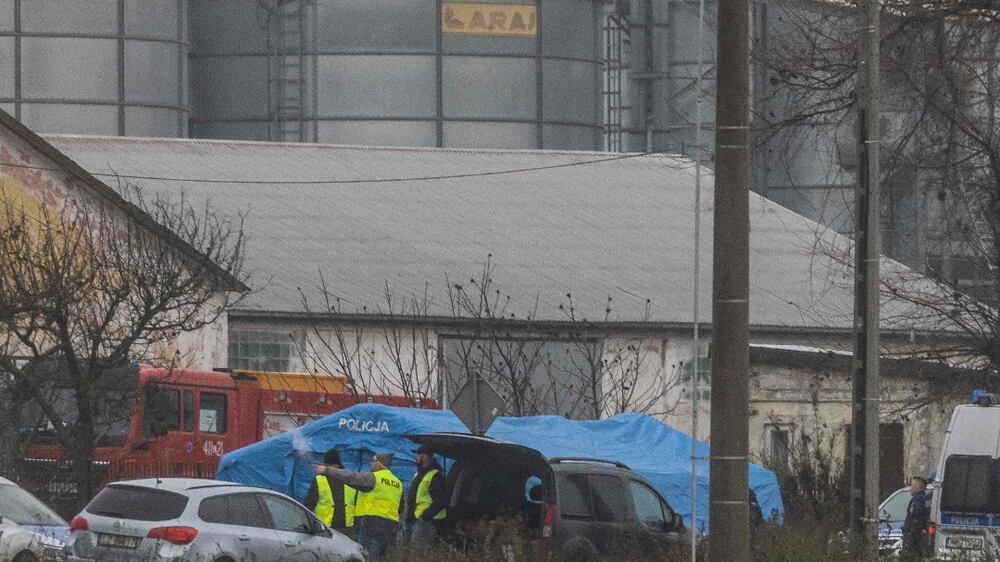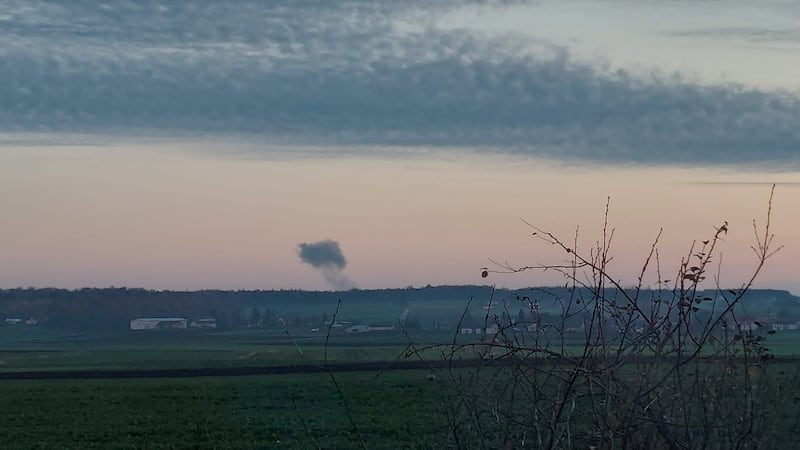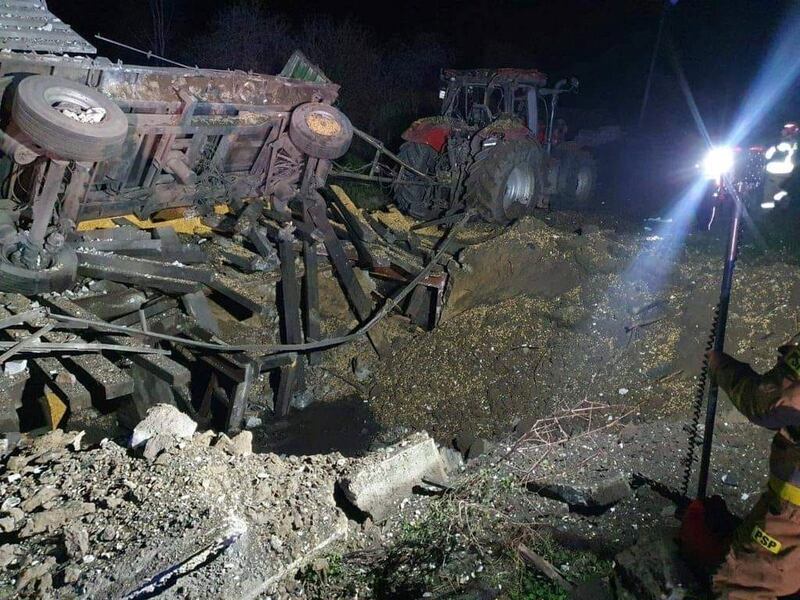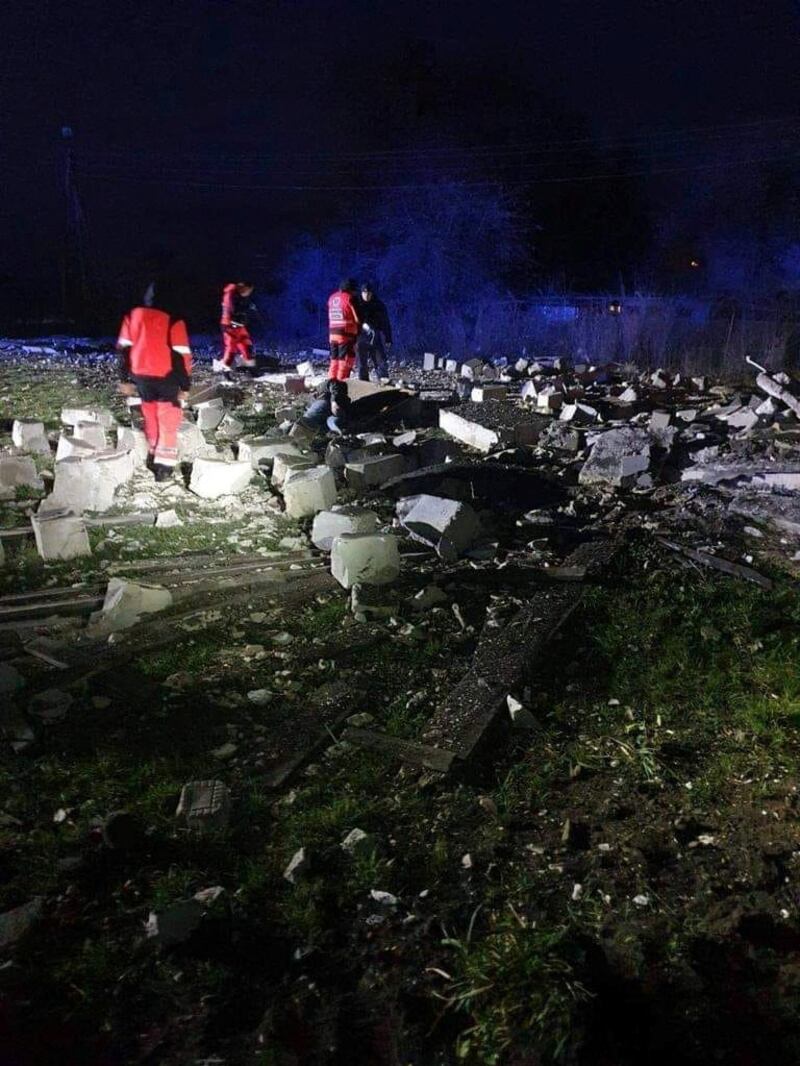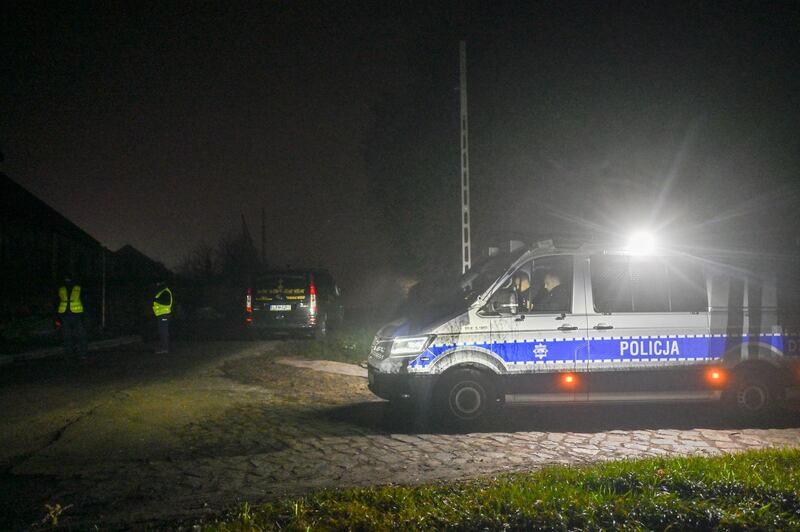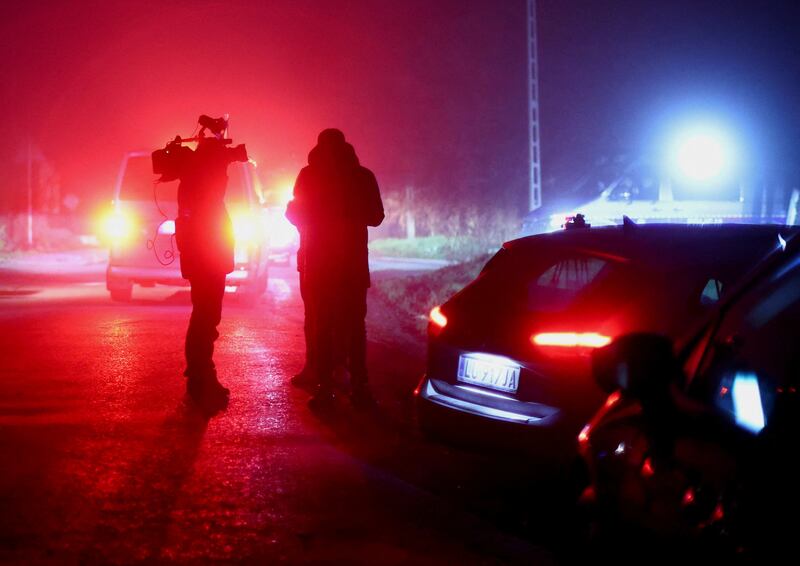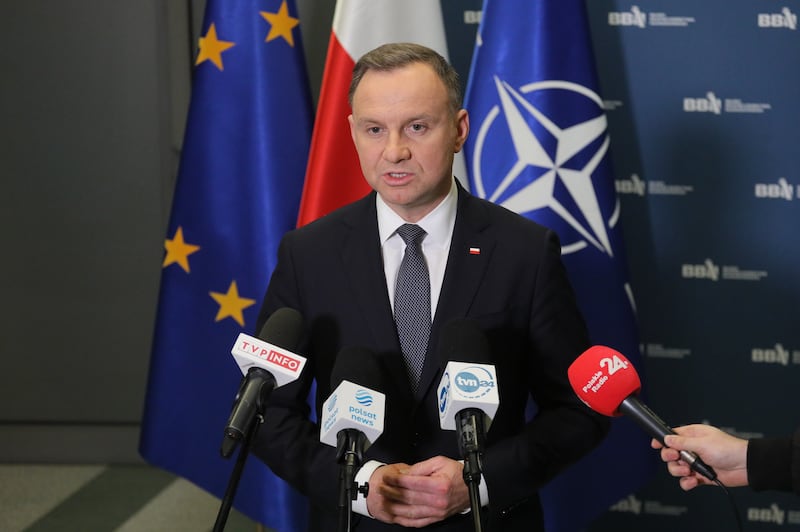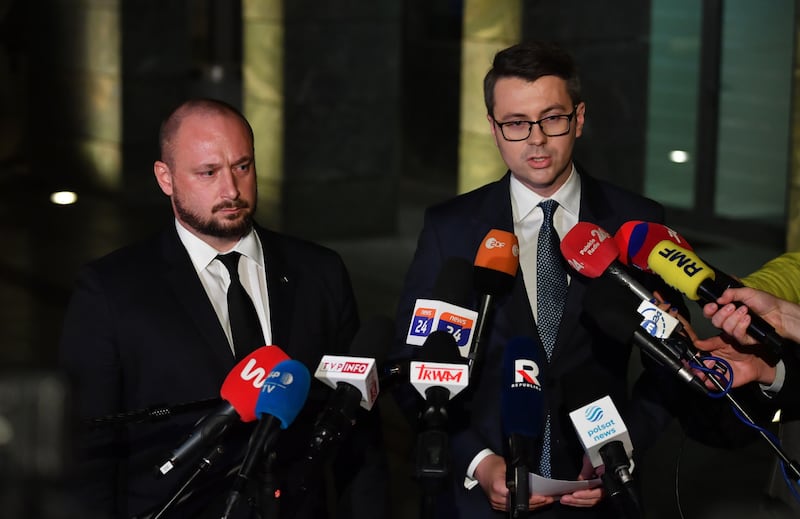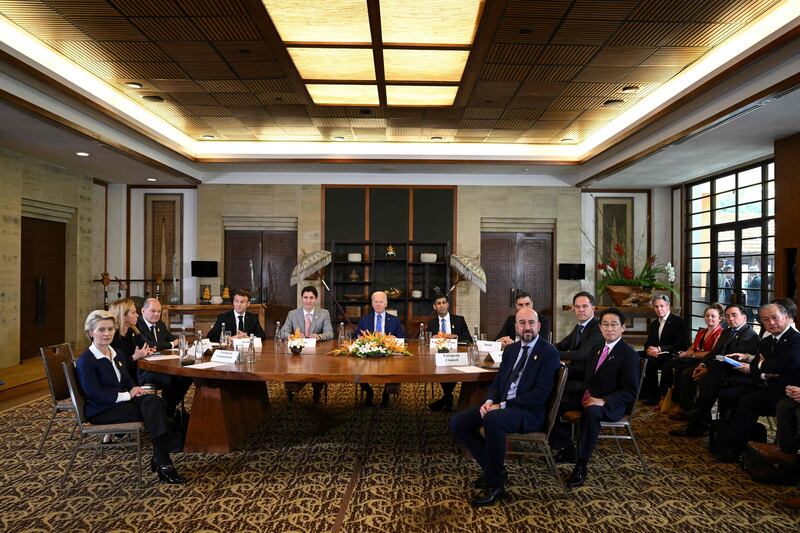Polish President Andrzej Duda on Wednesday said there were no indications the missile that killed two people was an “intentional attack”.
Mr Duda said the explosion was most likely an unfortunate accident resulting from neighbour Ukraine's attempts to fend off a Russian air assault that savaged its power grid.
He said it was probable that a defence missile fired by Ukraine fell in Poland but the ultimate responsibility lay with Moscow, which launched a barrage of missile attacks in Ukraine on Tuesday.
“From the information that we and our allies have," Mr Duda said. "It was an S-300 rocket made in the Soviet Union, an old rocket and there is no evidence that it was launched by the Russian side.
“It is highly probable that it was fired by Ukrainian anti-aircraft defence.
“Ukraine’s defence was launching their missiles in various directions and it is highly probable that one of these missiles unfortunately fell on Polish territory.”
Nato Secretary General Jens Stoltenberg said there was no indication it was a deliberate attack, but it showed that the war in Ukraine continued to create dangerous situations.
Mr Stoltenberg said it was probably caused by a Ukrainian air defence missile, but Russia must stop “this senseless war”.
“This is not Ukraine's fault. Russia bears ultimate responsibility as it continues its illegal war against Ukraine,” he said.
No indication Poland missile blast was deliberate says Nato Secretary General
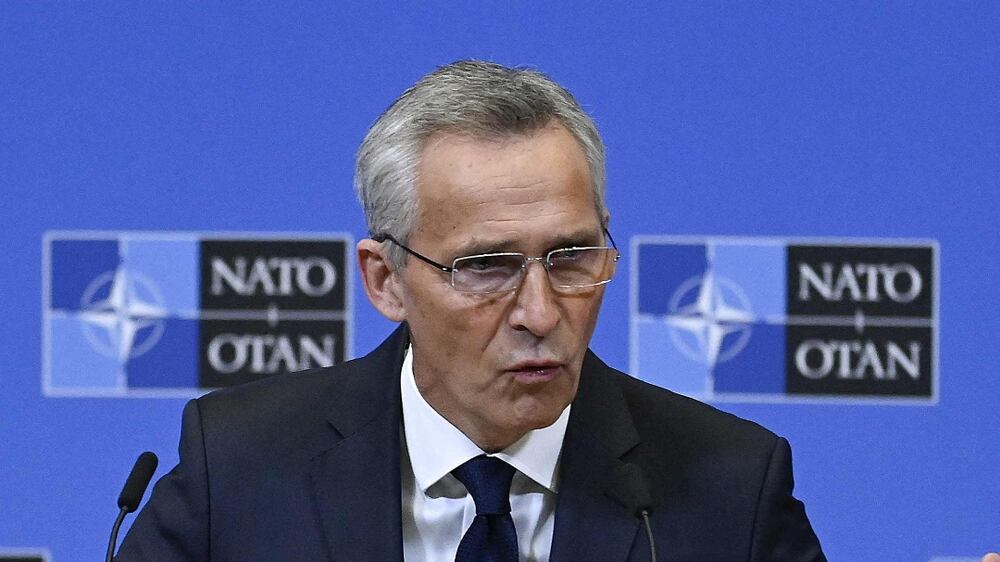
The announcements, which followed similar suggestions by the US, have eased global concern that the war in Ukraine could spill across the border.
The US military estimates that Russia launched "at least 60 missiles" on Tuesday but that number could be as a high as 100.
"It was likely the largest wave of missiles that we've seen since the beginning of the war," said Gen Mark Milley, chairman of the Joint Chiefs of Staff.
Ukrainian President Volodymyr Zelenskyy told Interfax Ukraine news agency on Wednesday that he was certain the explosion was not caused by a Ukrainian missile.
"I have no doubt that it was not our missile," Mr Zelenskyy said.
He said he believed Tuesday's explosion was caused by a Russian missile, and that he based his conclusions on reports from Ukraine's military, which he "cannot but trust".
Mr Zelenskyy said he believed Ukraine should already have been given access to the site of the explosion.
"Do we have the right to be in the investigation team? Of course," he said.
The explosion in a farm building about 6km from the Ukrainian border on Tuesday killed two farm workers, leaving the village of Przewodow in shock and sparking international fears over a possible escalation of the conflict.
Poland is still analysing the possibility of launching the Nato Article 4 procedure, which is invoked when any member state feels its “territorial integrity, political independence or security” are at risk, although it may not be necessary to use that measure, Prime Minister Mateusz Morawiecki said.
Poland is protected by Nato's commitment to collective defence, which is enshrined in Article 5 of its founding treaty.
The country has placed its military on heightened alert and summoned the Russian ambassador for “immediate detailed explanations”.
Nato and G7 leaders who met for an emergency meeting on the sidelines of the G20 summit in Bali offered their “full support for and assistance” with Poland's investigation into the explosion in the country's east.

US President Joe Biden, who was attending the G20 summit in Indonesia, said it was “unlikely … that it was fired by Russia” and called for a thorough investigation.
British Prime Minister Rishi Sunak said the incident took place against a barrage of missiles attacking civilian infrastructure in Ukraine.
“That was happening at a time when the G20 was gathered trying to find resolution to some of the world's challenges and at the same time Putin was raining down indiscriminately that volume of missile attack,” Mr Sunak said.
“I think it shows utter contempt for the international rules-based system.”
The G20 leaders jointly declared they “deplore in the strongest terms” Russia's aggression.
What is the S-300 missile?
· The S-300 is a family of surface-to-air missiles, originally developed by the Soviet Union. It was first put into operation in the late 1970s after a decade of development.
· There are several versions of the S-300 rocket, with different technical capabilities and ranges. The maximum range of the standard missile is 150km and the warheads weigh 133-143kg, according to the Centre for Strategic and International Studies. It is not known which version may have been used in Tuesday's incident.
· S-300 missiles are intended to shoot down aircraft, drones and incoming cruise and ballistic missiles. Full S-300 launchers include detection radars that track incoming targets. Missiles are equipped with guidance systems to automatically latch on to targets. Several individual missiles can be fired simultaneously at multiple targets.
· The most recent version of the S-300 — called the Antey-2500, which was put into operation in the early 2010s — has a range of 350km, according to a catalogue entry on Rosoboronexport, Russia's state-run arms export agency. The system has “high tactical and technical characteristics that allow to use it for air defence of the most important administrative, industrial and military facilities, troop groups, coastal infrastructure and naval forces at stationing site,” Rosoboronexport's website says.
· S-300s are used by both Russia and Ukraine, as well as 18 other countries, including Nato members
Ukraine on alert
Meanwhile, fresh air raid alerts sounded across Ukraine on Wednesday, as the country braced for further Russian attacks following a barrage of strikes on the country’s energy infrastructure.
The warnings sounded in all regions of the country after 10 million Ukrainians were left without electricity on Tuesday, as dozens of Russian missiles hit power stations in the biggest aerial attack since the invasion began in February.
The warnings were lifted in the capital Kyiv minutes later.
“After yesterday's rocket strikes, I was informed in the morning that most of the subscribers were reconnected,” Mr Zelenskyy said on social media, as he vowed to “defeat all enemies”.
“Our engineers and rescuers worked all night in different regions.”
The power supply was gradually being restored on Wednesday, officials said.
In Kyiv, city military administration head Sergiy Popko said on Telegram that “thanks to the well co-ordinated work of engineers and employees of all public utilities … the power supply for critical infrastructure facilities has been restored”.
The Mayor of the western city of Lviv, Andriy Sadovyi, said “power has been restored throughout almost the entire city”.
“There are isolated reports of houses where there is no electricity yet. We are working on it,” he said on social media.
